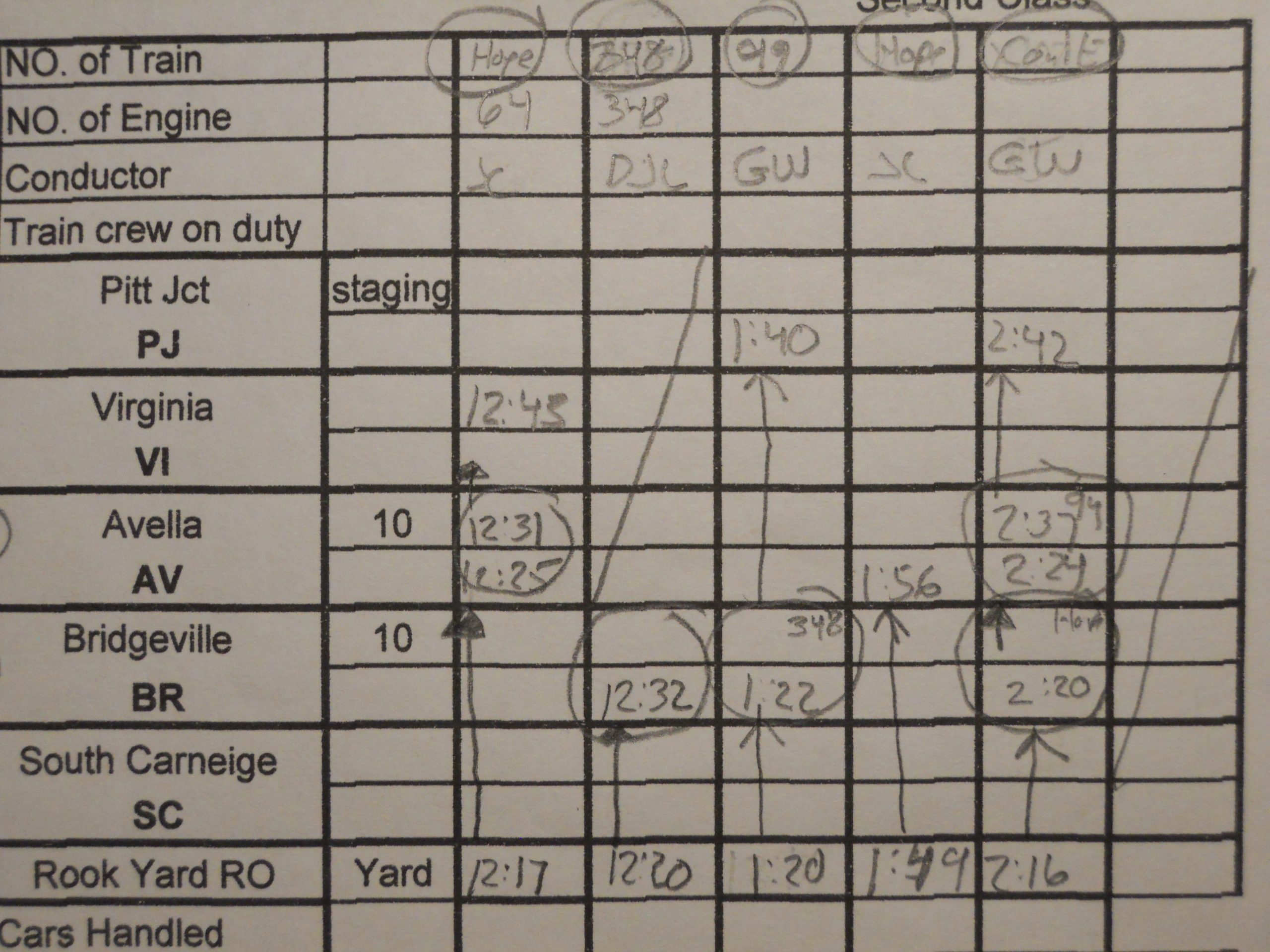On Sheet – On the subject of sheets
On Sheet – On the subject of sheets
 n most model railroads, dispatchers usually uses a magnetic board to move trains. Sure, you’ve seen them – a map of the railroad (usually made with thin tape on a metal shelf) where little magnets with train symbols on them are moved about to show the location (or limit of authority) of a train. I’ve even written an Excel sheet that does just that, allowing the user to double click on a train and then double click on the desired location of a train. It works better since it shows EVERY location of the train, not just the start and finish.
n most model railroads, dispatchers usually uses a magnetic board to move trains. Sure, you’ve seen them – a map of the railroad (usually made with thin tape on a metal shelf) where little magnets with train symbols on them are moved about to show the location (or limit of authority) of a train. I’ve even written an Excel sheet that does just that, allowing the user to double click on a train and then double click on the desired location of a train. It works better since it shows EVERY location of the train, not just the start and finish.
However, it doesn’t take much more to actually do it realistically using Train Sheets. All you have to do is train your eye and thinking to interpret what’s going on on the division a little differently.
Below is the right-side of a Train Sheet I used in a recent session on a friend’s Pittsburgh and West Virginia. It’s showing the Eastbound traffic, and since it’s on the right side of the sheet, you read up. There are more columns not show to the left.

So how does this work? Well, when a train originally calls me, I write his name/number on the top of the sheet. I also try to get the lead unit number and the engineer/conductor initials. That sets up the column.
Since all these trains are coming out of Rook Yard, I’ll write the time I issue warrants on the very bottom row. This shows when the train had clearance to depart the yard. Now, all the towns east (above) of Rook show a station and two lines – this is so you can record the time when an engineer arrives and when (if he has work or a meet) he departs.
I’ve never found an official instruction on how train sheets are handled. As long as you get trains across the division without denting them, recording the time for the official record, you’re golden. Given that, my method is as follows: once I give the train authority under a warrant to get to a certain location, I’ll draw an arrow along the side of the boxes, showing the limit of his authority. Also, at the final location, I’ll use a hollow arrow to denote he’s going onto the main, and a filled in arrow to denote a siding. If I intend to have him meet another train at that location, I’ll circle the train/town area and even put the meeting train in cribbed script to the side.
As there is another bunch of columns to the left of the town column shown (for Westbounds, proceeding down the sheet) it makes it pretty easy to look at the circled meets to see where everyone is sliding by. And you can verify with the arrowheads that one train is on the main, the other on the siding.
If a train ends its run, I’ll circle his Train Number to show he’s completed. Also, if he completes somewhere in midsheet, I’ll throw a diagonal line across the rest of his boxes to denote it’s not in use.
It might be confusing but once you learn to look at a train sheet, it becomes easy to tell where a train is going to based on the limit of his arrows. Meets become obvious.
I’ll also mention that my crews should have been calling me at ever station, not just their completing station. Under warrants, it’s frustrating. Under TT&TO, it can be deadly (think about it – in warrants, I’m telling a train how far it can go. In TT&TO, the train just continues off his timetable. Not calling in your times at each station means you are not on the dispatcher’s radar, a good way to end up crushed in the balled-up wreckage of your locomotive).
Train Sheets are easy to put together and make printer ready. Just go online and look for a real Train Sheet that meets your need (you might even find one for the railroad you model)*. You don’t need all their information (they have rows on some sheets for numbers of cars, and who has time to count during a session?). Look and feel is good enough. In real life, train sheets are really wide – sometimes two feet or greater. You can get by with six columns on either side and just use additional sheets as needed. Or you can tape them together. Whatever works.
The point is, this is one of those things where the prototype (Train Sheets) is actually easier to put together then the magnetic board (with all those silly magnets). You can even make blank train sheets and take them to a friend’s layout, writing in the town names and doing it on the fly.I find that owners really get excited when they can see the finished sheet detailing how their railroad ran.
It’s worth a try!
>>>AND MY BOOKS ARE WORTH A LOOK<<<
* Though when googling “Train Sheets” online, be ready to get a lot of hits for children’s sheets with choo-choos on them.
